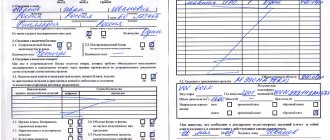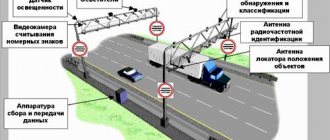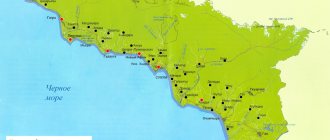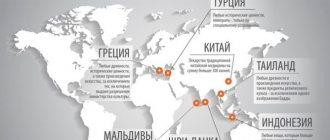If you don’t really understand what you can and cannot import into the Czech Republic in 2021, then the article you are reading now will help you understand this issue. Formally, any guest of the Chechen Republic should not have any problems crossing the border. You simply find the information you need on the Internet and get acquainted with it. But practice shows that this option is far from being as simple as it seems.
Firstly, the relevance of the data on most resources is very doubtful. But no one will directly tell you that the information is outdated. Secondly, other authors don’t bother themselves much with checking with official information, as a result of which some of your things will simply be taken away from you at customs (and it’s good if they don’t impose a serious fine). Thirdly, controversial issues may not be fully resolved, which is why you will have to give up something (for example, necessary medications), or, at great risk, try to smuggle them in.
Understanding this, we decided to prepare for you a large and as detailed material as possible, which will clearly answer the question of what can and cannot be imported into the Czech Republic in 2021. We guarantee that the information is up to date at the time of writing (end of October 2021), but we are not ready to take responsibility for possible problems at customs. If you need individual advice on this issue, we invite you to discuss the terms with our specialists ( [email protected] ).
It is prohibited to transport across the Polish border
- Weapon
- Chemicals and toxic substances
- Psychotropic and narcotic drugs
- Unlicensed (pirated) software, pornographic materials
- Valuables and antiquities (without export permit)
- Plants and animals that are endangered
Prohibited Products
- Milk and dairy products (cheese, butter, etc.)
- Meat, meat products, lard
- Canned goods
- Vegetables, seeds, plants, fruits (except pineapples, coconuts, bananas, dates and durians) that are imported into Poland must have a phytosanitary certificate. It must be issued by the official plant protection service in the country of origin. The restrictions also apply to persons who bring such plant products to EU countries for their own needs. Therefore, it will not be possible to cross the border if customs officers find, for example, tree seedlings or indoor flowers in your luggage without the appropriate document.
Now let's talk: What and how much can be transported across the border between Ukraine and Poland.
Minsk-Zatoka by bus, price
Bus Minsk-Zatoka, round trip fare for 9, 13, 14 or 18 nights – 50 USD + 50 BYN
Bus Minsk-Zatoka, fare only one way – 25 USD + 50 BYN
Route schedule
Bus route to Zatoka from Minsk: Minsk – Slutsk – Soligorsk – Mozyr – Kyiv – Zatoka
| Departure from Minsk | Holidays in Zatoka (10 days/9 nights) | Arrival in Minsk |
| 07.06.2020 | 08.06.2020 – 17.06.2020 | 18.06.2020 |
| 12.06.2020 | 13.06.2020 – 22.06.2020 | 23.06.2020 |
| 16.06.2020 | 17.06.2020 – 26.06.2020 | 27.06.2020 |
| 21.06.2020 | 22.06.2020 – 01.07.2020 | 02.07.2020 |
| 25.06.2020 | 27.06.2020 – 05.07.2020 | 06.07.2020 |
| 30.06.2020 | 01.07.2020 – 10.07.2020 | 11.07.2020 |
| 04.07.2020 | 05.07.2020 – 14.07.2020 | 15.07.2020 |
| 09.07.2020 | 10.07.2020 – 19.07.2020 | 20.07.2020 |
| 13.07.2020 | 14.07.2020 – 23.07.2020 | 24.07.2020 |
| 18.07.2020 | 19.07.2020 – 28.07.2020 | 29.07.2020 |
| 22.07.2020 | 23.07.2020 – 01.08.2020 | 02.08.2020 |
| 27.07.2020 | 28.07.2020 – 06.08.2020 | 07.08.2020 |
| 31.07.2020 | 01.08.2020 – 10.08.2020 | 11.08.2020 |
| 05.08.2020 | 06.08.2020 – 15.08.2020 | 16.08.2020 |
| 09.08.2020 | 10.08.2020 – 19.08.2020 | 20.08.2020 |
| 14.08.2020 | 15.08.2020 – 24.08.2020 | 25.08.2020 |
| 18.08.2020 | 19.08.2020 – 28.08.2020 | 29.08.2020 |
Rules for transporting baggage through Estonian customs
The Schengen rules also establish restrictions and prohibitions on certain types of products. For example, specific standards have been established for the transportation of alcohol and tobacco, dairy products and meat. Let's consider what and in what quantities can be imported into Estonia, and what cannot.
What can you import to Estonia and how much?
When entering Estonia, the same restrictions apply as when entering any other Schengen country. For different groups of goods, customs imposes different restrictions.
For example, the transportation of products is strictly limited. The only food products allowed to be imported are:
- fish products for personal consumption in any form, provided that 1 fish does not weigh more than 20 kg and, if it is fresh fish, it is gutted;
- other products of animal origin, such as honey, oysters or snails, if their total weight does not exceed 2 kg;
- no more than 125 grams of sturgeon caviar;
- other products of non-animal origin used by passengers as food, in quantities necessary for personal consumption;
Limits for importing food products are indicated on the website – emta.ee.
The rules for importing animals into Estonia have also been established - according to them, only animals can cross the border without hindrance:
- marked with a microchip or tattoo;
- having a passport or identification certificate;
- vaccinated against rabies.
When 5 or more animals are imported into the country, this is considered a trade quantity. Accordingly, they must undergo veterinary control and receive a certificate. This can only be done through an accredited checkpoint - Luhamaa border checkpoint. More information on this matter on the customs website.
Separately, it is worth considering restrictions on the import of alcohol. Thus, foreigners who have reached the age of majority can import during a one-time border crossing:
- wine up to 4 liters (except sparkling wine, liqueur wine);
- beer up to 16 liters;
- in addition, 2 liters of alcoholic drinks with an alcohol content of up to 22% (including sparkling wine, liqueur wine);
- or 1 liter of strong alcoholic drink (with an alcohol content of more than 22%).
Please note that this rule does not apply to the export of alcohol: how much alcohol can be exported from Estonia is determined by the customs regulations of the country where the foreigner is traveling.
Corresponding standards have also been established for cigarettes and tobacco products. Adult foreigners can import:
- 40 cigarettes (air passenger - up to 200 cigarettes);
- or 100 cigarillos;
- or 50 cigars;
- or 50 grams of smoking tobacco (air passenger - up to 250 g of smoking tobacco), including hookah tobacco;
- or 20 milliliters of tobacco liquid;
- or 120 grams of solid tobacco substitute;
- or 20 grams of other tobacco products or one package of snuff, chewing or sucking tobacco.
For gasoline, diesel and other fuels, the following transport limits have also been determined that allow import into Estonia:
- fuel in the car tank in normal quantities;
- fuel in a canister in a volume not exceeding 10 liters.
In 2021, plants and plant products may be transported through Estonian customs up to:
- 5 plants, trees, bushes;
- 3 kg of citrus fruits;
- 5 kg of other fruits and vegetables;
- 20 cut flowers or branches;
- 5 potted indoor flowers;
- 2 kg of flower bulbs/tubers;
- 5 five-gram packages of seeds.
Customs rules also regulate the rules for transporting medicines: passengers can carry up to 10 types of drugs, 5 packages each, and up to 5 types of drugs, 3 packages each, for animals taken with them.
In addition, the carriage of:
- weapons and ammunition - they can only be imported with permission from the Police and Border Guard Board;
- pyrotechnics - can only be imported if you have a permit for the import of explosive material;
- Endangered plants and animals can only be imported with documents from CITES.
These are the most important, but not all restrictions. Find out more about them on the customs website.
What you absolutely cannot import
With all this, the legislation of the Schengen zone also defines a list of what cannot be imported into Estonia from Russia, namely:
- dairy and meat products in any quantities;
- bladed weapons, firearms, ammunition prohibited in civilian use;
- counterfeits, including counterfeit branded goods such as clothing and shoes;
- drugs;
- pirated versions of software, audiovisual products;
- erotic and pornographic materials;
- animals and plants of species that threaten the natural balance.
A similar list of goods is prohibited for export to any other country.
Restrictions on the import and export of goods
Duty-free import restrictions apply to most consumer goods, in particular:
- tobacco products. By air, without declaration, it is allowed to import up to 200 cigarettes or 100 cigarillos, or 50 cigars, or 250 grams of tobacco. For land transport, the standards are much lower: 40 cigarettes, 20 cigarillos, 10 cigars or 50 grams of tobacco. In this case, the rules of combination apply: for example, if you are carrying 100 cigarettes by plane, you can only add 50 cigarillos or 25 cigars to them;
- alcoholic drinks. Restrictions on alcohol include permission to transport 1 liter of strong alcohol (cognac, vodka, whiskey, rum), or 2 liters of low-strength alcohol (up to 22% alcohol, for example, vermouth, cider or liqueurs), or 4 liters of wine, or 16 liters beer. As with tobacco, combining rules apply. However, only adult citizens can import goods such as tobacco. The method of importing alcohol does not affect the number of permissible bottles;
- perfume products. Duty-free import is allowed for 50 grams of perfume or 250 grams of eau de toilette. The rule of combination also applies to perfumes;
- medicines. Tourists and other persons entering the country have the right to import into the Czech Republic medicines exclusively for personal consumption that they need during their stay in the country. In particular, the import of up to 10 types of medicines is allowed - each in 5 factory packages.
If we are talking about restricted medications, including those containing narcotic substances, you should have a doctor’s prescription (notice) for them, preferably with a translation.
However, without permission from the Department of Medicines, it is permissible to transport only one package of medicines containing drugs, no more than 20 units in size.
Useful tips
Knowing how much alcohol can be exported from the Czech Republic, it becomes interesting what other restrictions apply at customs. Tourists should be warned about what issues may arise at the Czech border:
- Bohemian glass and other fragile souvenirs from the Czech Republic should be wrapped in bubble wrap.
- Before traveling, you should charge all gadgets as customs officers will ask you to turn on your mobile devices to check whether they are a container for transporting prohibited goods.
- Security officers are required to check those passengers who act unsure when boarding the plane. To save yourself from unnecessary checking and not waste precious time, you should behave confidently, not look around, keep your head straight and not worry.
List and volumes of goods prohibited for movement across the contact line with Ukraine
In accordance with Article 111 of the Law, the import, export and transit through the customs territory of certain types of goods may be prohibited by laws and other regulatory legal acts of the Donetsk People's Republic.
The following goods cannot be passed through the customs border of the Donetsk People's Republic:
1) prohibited for import into the customs territory of the DPR;
2) prohibited for export outside the customs territory of the DPR;
3) prohibited for transit through the customs territory of the DPR;
4) who move across the customs border of the DPR in violation of the requirements of this Law and other regulatory legal acts of the DPR.
Currently, the following prohibitions are provided:
Decree of the Head of the Donetsk People's Republic dated April 4, 2017 No. 73 “On establishing a ban on the import into the customs territory of the Donetsk People's Republic of goods from the territory of Ukraine,” according to which the import into the customs territory of the Donetsk People's Republic of goods from the territory of Ukraine transported across the contact line is prohibited with Ukraine, with the exception of the import of goods for personal use by type and in accordance with the standards provided for in subparagraph 1.4.8 of Chapter 1 of the Temporary Regulations on the Unified Customs Tariff of the Donetsk People's Republic, approved by Resolution of the Council of Ministers of the Donetsk People's Republic dated October 16, 2015 No. 19-29 (as amended by the Resolution of the Council of Ministers of the Donetsk People's Republic dated June 25, 2016 No. 8-21).
Order of the Ministry of Internal Affairs of the DPR dated 05/03/2017 No. 170 “On establishing a ban on the import of goods from the territory of Ukraine into the customs territory of the Donetsk People’s Republic” (registered with the Ministry of Justice of the Donetsk People’s Republic on 03/19/2017, registration No. 2011) according to which the import is prohibited to the customs territory of the Donetsk People's Republic of goods from the territory of Ukraine transported across the line of contact with Ukraine. This prohibition does not apply to citizens importing goods from the territory of Ukraine for personal use by type and in accordance with the standards provided for in subparagraph 1.4.8 of Chapter 1 of the Temporary Regulations on the Unified Customs Tariff of the Donetsk People's Republic, approved by the Resolution of the Council of Ministers of the Donetsk People's Republic of October 16, 2015 No. 19-29.
Tax free
You can count on the return of tax free if you have a receipt in your hands with a purchase amount of 2.0 thousand crowns. The number of goods purchased does not play any role.
You will not be able to get a refund for items with a short expiration date.
This system only applies to:
There is no need to pack these items because TAX REDUND will ask you to present them at the counter.
This is what a tax-free counter looks like in Prague
Refunds are made in accordance with the current exchange rate - in euros or rubles. It is most profitable to return tax free in crowns, since this does not involve conversion.
Returning VAT takes a lot of time. The average time spent in line is 1 hour. If a person is leaving Prague, the wait can take up to 4 hours. The VAT refund rate for 2019 is 15-21%.
What cannot be imported to the Czech Republic?
The lists of prohibited goods and items are similar throughout the EU. This is a fairly predictable list, the main parameters of which are:
- Narcotic, psychotropic and toxic substances (with the exception of medications, which are discussed in more detail below).
- Weapons and their elements. Including cold, firearms, chemical, bacteriological, explosives, etc. The exception is sports equipment, subject to special permits.
- Items of cultural and historical value, without specially issued documents (for example, temporary import of paintings for the purpose of holding exhibitions is acceptable, but they must be issued accordingly).
- Pornographic materials.
- Plants and seeds.
Let's look at the last point in a little more detail. Plants also include indoor flora in pots, but an exception may be made for a small number of cut plants.
By seed is meant everything that can be qualified in this way. In practice, in the most common cases, sunflower seeds are almost never missed, incl. and fried in original packaging. Problems often arise with whole coffee beans.
In addition to this list, there is a separate ban on medicines and products of animal origin.
What products cannot be imported?
European laws strictly prohibit the import of any products of animal origin. The taboo applies not only to meat, lard, poultry or milk, but also to finished products that contain them - sausages, sausages, smoked meats, etc.
There are cases when chocolate and other sweets are not allowed into the Czech Republic (as well as into other EU countries) because of the milk indicated in their composition.
An exception may be some quantities of baby food in sealed original packaging.
In practice, a couple of sandwiches may not be noticed, but in fact this is still a violation, and if discovered, you will have to part with the delicacies.
What medications cannot be imported?
Unfortunately, we cannot provide an exact list. In addition, when medications are listed in any lists, their international names are used, which differ from the usual brands.
We can only speak in general. The rules state that mildly active drugs can be imported in quantities necessary for personal consumption. Agree, the wording is more than vague.
At the same time, more serious drugs are also allowed, provided there is a medical certificate from a doctor, explaining the required quantity. It must match the number of days of your upcoming stay. Accordingly, everything else may be prohibited.
Expert opinion Dmitry Konstantinovich Leading expert of the Polish Consultant
Indeed, there is some uncertainty with the import of medicines. While customs officers know some vital and fairly common drugs, problems often arise with others.
Some tips on this matter:
- In order not to waste time and nerves, try to ensure that medications are accompanied as much as possible with certificates from a doctor. Just remember that they may require translation.
- The second advice is not legal, but everyday - you can find out a specific list of medicines allowed for import, and their quantities, from the contents of a standard car first aid kit. Its presence in the car is mandatory, and it does not require any additional confirmation (certificates from doctors). This means that at least this list can be imported freely in other ways.
- When creating a first aid kit, do not forget that in the Czech Republic the list of prescription drugs is many times wider than in Belarus, Russia or Ukraine. It will be impossible to buy a lot of things without a prescription from a Czech doctor.
What kind of alcohol do tourists bring?
Beer is traditionally brought from the Czech Republic. This is clear as day and beyond any doubt. It is here, and even in Bavaria, that the most delicious beer in the world is brewed. Moreover, it is difficult to say with one hundred percent certainty which beer is better: Czech or German. But, besides beer, the Czech Republic is also famous for stronger drinks. And the strongest of them is absinthe.
You may be interested in: Severnaya Zemlya Islands - features, description and interesting facts
In Prague there is even a museum of this legendary drink, where you can taste expensive types of absinthe and watch a mesmerizing fire show starring it.
In the Czech Republic, absinthe is considered the national drink. People have been treating people here with a bitter tincture of wormwood since ancient times. That is why you can find a sprig of wormwood in many souvenir bottles of absinthe. This makes as much sense as dipping a worm into a bottle of Mexican tequila, but tourists traditionally fall for it. It is worth noting that real absinthe cannot have a strength below 70 degrees. This is the tradition of making this drink, because the essential oil of wormwood, the main component of absinthe, disappears without a trace when the tincture is distilled as soon as the alcohol content drops below the specified 70%.
You may be interested in: Cave of the Reed Flute. Natural attractions of China: photos, description
In addition to absinthe, other herbal and fruit infusions are widespread and popular in the Czech Republic. The well-known Karlovy Vary Becherovka is a herbal liqueur with a strength of about 38 degrees.
It is easier and more pleasant to drink than absinthe, and is popular among tourists as a universal Czech souvenir. Also noted by tourists is slivovitz, a Czech plum brandy that is slightly stronger and contains at least 45% alcohol.
What can be transported across the Russian border
With regard to goods moved across the border, the general rule is as follows: everything that is not prohibited is permitted. However, it should be taken into account that quotas have been established for some of the goods allowed for transportation. That is, in principle, they can be transported, but in limited quantities. These restrictions primarily concern tobacco and alcohol. There are also restrictions on taking cash abroad. In addition, the export of currency valuables in the form of products made of precious metals and stones is limited.
To avoid problems with duty-free baggage transportation, the following rules should be followed:
- everything you bring must be intended for you and your family. This applies to both new goods and used goods. Accordingly, it will not be possible to transport, for example, several new televisions duty-free - they will be recognized as a consignment that can be transported across the border, but under special rules, including the payment of customs duties;
- the weight of duty-free baggage must not exceed 50 kg;
- If you travel by land, you can import goods worth up to 1.5 thousand euros duty free. Moreover, in the case of movement by air, the permissible value of such goods increases - in 2021, goods worth up to 10 thousand euros can be imported duty-free in luggage.
Special rules are established for the import of tobacco and alcoholic beverages. The rules for transporting alcohol across the Russian border depend on the direction of your movement. In particular, when entering the Russian Federation, you can not declare and import 3 liters of alcoholic beverages duty free. You can bring in an additional 2 liters, but you will have to declare the alcohol, and pay 10 euros in duty for the extra liters.
When leaving the Russian Federation, there are no restrictions on the export of alcohol, which means you can bring it in any quantity. However, you should keep in mind that you can leave the country with any amount of vodka, but you are unlikely to be able to import it into another, since there will probably be restrictions there.
Tobacco products are also subject to quotas. It is prohibited to import more than 50 cigars, 100 cigarillos, and only 250 grams of tobacco can be imported. As for cigarettes, their import is allowed in the amount of 200 pieces. In this case, you can only import one of the products listed above. In addition, you should remember that the import of alcoholic beverages, cigarettes and other tobacco products is available only to adult citizens - a minor traveling with you will not be able to import additional amounts of whiskey or cigars.
What is allowed to be imported into the Russian Federation
Goods available for duty-free import into the Russian Federation and the rules applicable to them are presented in the table:
| Imported materials | Limit standards | Notes |
| Personal products | The maximum cost is up to 1.5 thousand or 10 thousand euros - depending on the method of import. Maximum weight – 50 kg. | If the norm is exceeded, it is subject to a duty of 30% of the cost, but not less than 4 euros per 1 kg. |
| Alcohol | 5 l | 3 liters are duty free, the next 2 liters are subject to a duty of 10 euros per 1 liter. Import is available only to adults. |
| Tobacco products | 250 grams | Only for adults. |
| Used products belonging to refugees and migrants | – | The status must be documented. |
| Property received as an inheritance | – | The fact of inheritance must be confirmed. |
| Items belonging to Russians who have lived abroad for at least a year | Maximum cost up to 5 thousand euros | Exceeding the norm is subject to a duty of 30% of the cost, but not less than 4 euros per 1 kg. |
| Urns with ashes of people and coffins with their bodies | – | Death and cremation certificates are required. |
| Items previously exported from the Russian Federation | – | |
| Property of foreigners imported temporarily | – | Within the limits established by customs regulations. |
| Currencies and traveler's checks | Equivalent to no more than 10 thousand US dollars |
It should be borne in mind that diamonds and some technical devices, such as car engines, solariums, heating boilers, etc., cannot be classified as goods for personal use.
Restrictions on export from the Russian Federation
The rules for the export of currency values correspond to the rules for their import. However, the export of jewelry is limited to its value of 25 thousand US dollars. At the same time, such restrictions do not include jewelry previously imported into the Russian Federation, regardless of whether they are exported by the person who imported them or by another person.
Current customs regulations
Due to the fact that the Czech Republic is a full member of the European Union and the Schengen area (which, we remind you, is far from the same thing), all domestic legislation roughly corresponds to those in other developed countries. They are mainly regulated by European Directive 2007/74/EC, but the matter is not limited to it. The regulations of both the EU and Schengen (at least 10), at least 8 laws of the Czech Republic itself and one and a half to two dozen by-laws issued by relevant ministries have no less legal force.
Consequently, the risk of encountering difficulties when crossing the border will be present in any case. And you should not believe dubious intermediaries who claim the opposite. Another point regarding the rules for transportation across the border concerns citizenship. The attitude towards “white” Europeans at customs is one thing, but towards guests of the Czech Republic from “third world” countries is completely different. Of course, there is no oppression, but the difference is visible to the naked eye.
Removal of objects of cultural and historical value
Regulation: Council Regulation EC 116/2009
According to EU Council Regulation 116/2009, objects of cultural and historical value include:
– Over 50 years: paintings on any material, mosaics, engravings, sculptures, photographs, manuscripts and sketches, archival materials.
– Over 75 years of age: vehicles.
– Over 100 years old: archaeological finds, elements of artistic or historical monuments, books.
– Over 200 years old: printed maps.
– Without taking into account age: samples of botanical, zoological, anatomical, mineralogical collections, collections of ethnographic, paleontological, numismatic, historical nature.
– Any antique over 100 years old according to CN EU 9706 00 00.
– Antiques 50-100 years old: jewelry, glass, furniture, ceramics, toys, musical instruments, carpets and tapestries, watches.
All this can be exported only with a special permit “export license”. In theory, Regulation 116/2009 sets value thresholds up to which cultural property can be exported. But to confirm this value, you need to apply for an export license.
In addition, EU member states may allow the export of certain items if they consider their cultural value to be insignificant.
The legislation is quite complex and confusing. Therefore, we recommend refraining from exporting antiques. But if you decide, then read carefully Regulation 116/2009 and make inquiries to the relevant authorities of the countries from which you are going to export.
GREEN and RED CORRIDORS
Passing customs control involves verbal or written declaration of goods and items that the passenger transports in hand luggage and luggage. For convenience, traffic lanes in the form of a corridor are organized at international checkpoints:
A passenger undergoes customs control along the “green” corridor (without filling out a customs declaration and without customs fees) if he transports in his luggage personal belongings, food for personal use for a total amount of up to 200 euros, goods for a total amount of up to 1,000 euros, currency up to 10,000 euro (equivalent), medicines no more than 5 packages, alcoholic drinks within normal limits (strong alcoholic drinks up to 1 liter, wine up to 2 liters, beer up to 5 liters) and tobacco products (no more than 1 block of cigarettes or no more than 250 gram of tobacco).
Passing customs control along the “green” corridor frees citizens from filling out a customs declaration.
Remember, by choosing the “green” corridor, you confirm that you do not have any items that are subject to written declaration, taxation and that are prohibited or restricted in import into Ukraine.
A passenger passes through the “red” corridor, undergoes mandatory customs control, fills out a customs declaration and pays customs duties if he has the following items with him and in his luggage: weapons, explosives, narcotic, psychotropic, poisonous, potent substances and medicines; radioactive metals; antiques, historical and art objects, musical instruments; printed publications, audio and audiovisual materials, other media; objects of flora and fauna, their parts or products obtained from them, domestic animals (with the original international veterinary certificate of the country of origin of this animal); medicines, goods and food products in volumes that are subject to taxation (medicines and preparations in quantities of more than 5 packages or cans, goods totaling more than 1,000 euros, food products - more than 200 euros); precious metals, stones and products; currency over 10,000 euros, including national currency and traveler's checks; above the norm alcoholic drinks (strong alcoholic drinks more than 1 liter, wine more than 2 liters, beer more than 5 liters) and tobacco products (more than 1 block of cigarettes or 250 grams of tobacco).
The passenger has the right to independently choose the corridor, but remember that violation of the rules for passing customs control and the requirements for declaring objects and goods entails administrative and criminal liability!
Parcels to Ukraine from abroad 2020
Regarding parcels to Ukraine from abroad, a limit has been introduced on the number of parcels received from abroad to 3 per month per recipient (the tax-free cost of each parcel should be 150 euros). That is, 450 euros per month is the maximum you can count on if you don’t want to pay a fee. Starting from the fourth shipment, you will have to pay 10% duty and 20% VAT. If the product is excisable, then there is also an excise tax, the amount of which depends on its weight, volume and quantity. Fees will be assessed on amounts that exceed the duty-free minimum of 150 euros. That is, if the amount of goods in the parcel is 200 euros, then duty and VAT will be calculated at 50 euros, and an additional 15 euros will need to be paid (excluding excise tax). You can receive such a parcel at the customs post after paying fees, filling out a declaration and a special form.
Cash removal
Regulatory legal acts: Articles 260, 261 of the EAEU Labor Code, Decision of the EEC Board 130 dated 06.08.19
The rules for importing and exporting cash in Russia are the same.
First, you need to estimate the total amount of cash you have on you. To do this, transfer all the money into American dollars at the current exchange rate of the Central Bank of the Russian Federation. Further options are as follows.
1. If your total cash on hand is LESS than $10,000. Then you don't need to declare anything.
2. If your total cash is between $10,000 and $100,000. Then you need to contact the customs service and declare the money. The procedure is very simple, you only need to fill out one document. There is no need to indicate the source of the money or prove its legal origin.
This new rule was established by the Decision of the EEC Board 130, which came into force on 02/04/2020. Remember! That information about the presence of a large sum of money ends up in state information databases.
3. If your total cash on hand is MORE than $100,000. Then a declaration is required, and in addition, this declaration must indicate the source of origin of the money and attach documentary evidence of its legal origin.
Agreements for the sale of cars or apartments, agreements for the gift of large sums of money or other civil contracts are suitable as evidence. We strongly recommend that you consult with a lawyer before removing large amounts of money.
Total
Unfortunately, there are no accurate and detailed lists of items prohibited for sending, and in this article I tried to summarize existing sources on the Internet for their convenient use. If you have a question about the possibility of sending certain goods, you could not find some goods in the Czech Republic or the EU - be sure to write in the comments under the article. If you are interested in customs clearance as such, please add it to the article (and under the article) about customs clearance.











